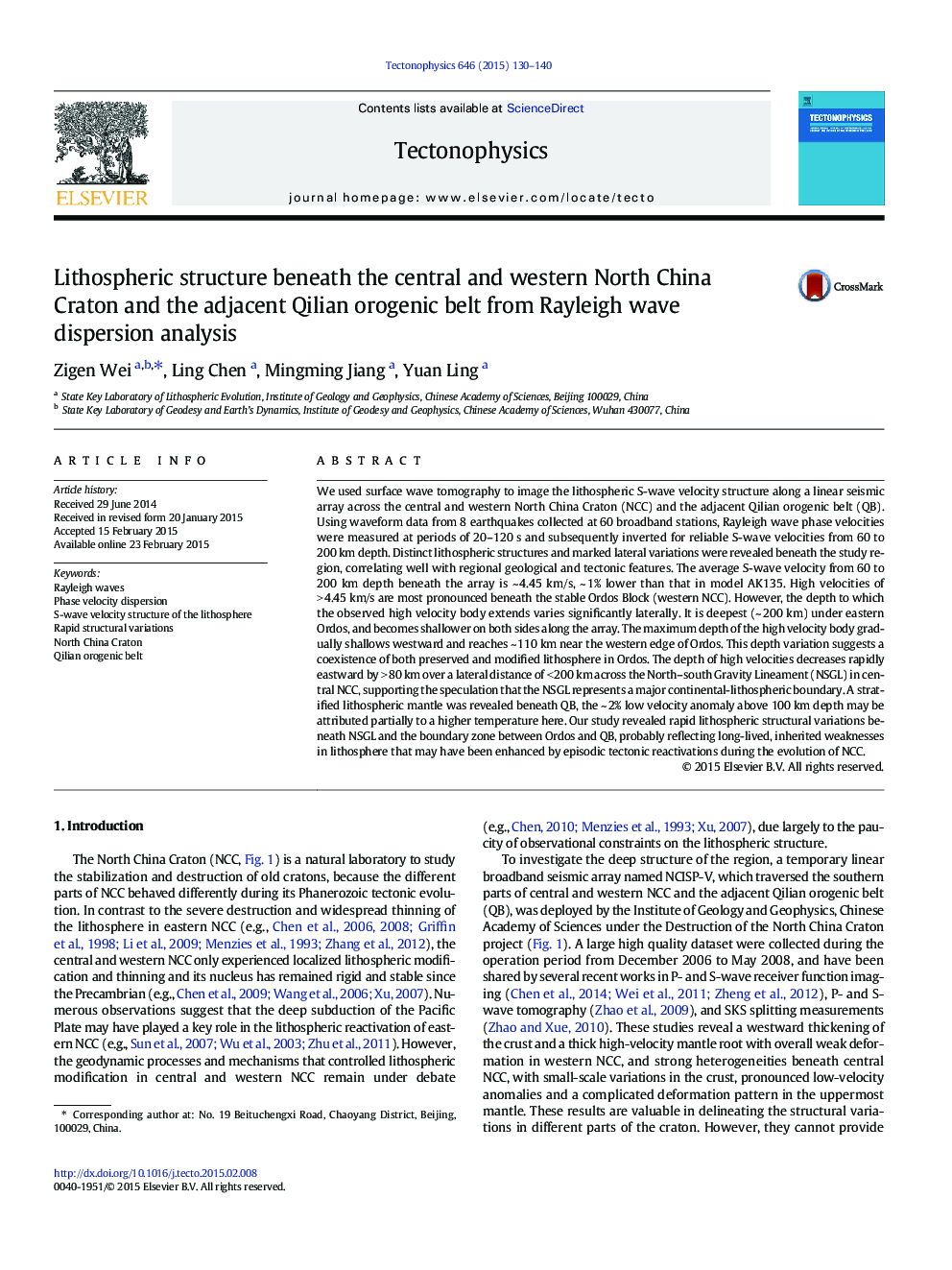| کد مقاله | کد نشریه | سال انتشار | مقاله انگلیسی | نسخه تمام متن |
|---|---|---|---|---|
| 4691724 | 1636747 | 2015 | 11 صفحه PDF | دانلود رایگان |

• Coexistence of both preserved and modified lithosphere in the Ordos
• Stratified lithospheric mantle beneath the Qilian orogenic belt
• Rapid lithospheric structural variations beneath the boundary zone
• Rapid lithospheric structural variations beneath the North–south Gravity Lineament
We used surface wave tomography to image the lithospheric S-wave velocity structure along a linear seismic array across the central and western North China Craton (NCC) and the adjacent Qilian orogenic belt (QB). Using waveform data from 8 earthquakes collected at 60 broadband stations, Rayleigh wave phase velocities were measured at periods of 20–120 s and subsequently inverted for reliable S-wave velocities from 60 to 200 km depth. Distinct lithospheric structures and marked lateral variations were revealed beneath the study region, correlating well with regional geological and tectonic features. The average S-wave velocity from 60 to 200 km depth beneath the array is ~ 4.45 km/s, ~ 1% lower than that in model AK135. High velocities of > 4.45 km/s are most pronounced beneath the stable Ordos Block (western NCC). However, the depth to which the observed high velocity body extends varies significantly laterally. It is deepest (~ 200 km) under eastern Ordos, and becomes shallower on both sides along the array. The maximum depth of the high velocity body gradually shallows westward and reaches ~ 110 km near the western edge of Ordos. This depth variation suggests a coexistence of both preserved and modified lithosphere in Ordos. The depth of high velocities decreases rapidly eastward by > 80 km over a lateral distance of < 200 km across the North–south Gravity Lineament (NSGL) in central NCC, supporting the speculation that the NSGL represents a major continental-lithospheric boundary. A stratified lithospheric mantle was revealed beneath QB, the ~ 2% low velocity anomaly above 100 km depth may be attributed partially to a higher temperature here. Our study revealed rapid lithospheric structural variations beneath NSGL and the boundary zone between Ordos and QB, probably reflecting long-lived, inherited weaknesses in lithosphere that may have been enhanced by episodic tectonic reactivations during the evolution of NCC.
Journal: Tectonophysics - Volume 646, 4 April 2015, Pages 130–140